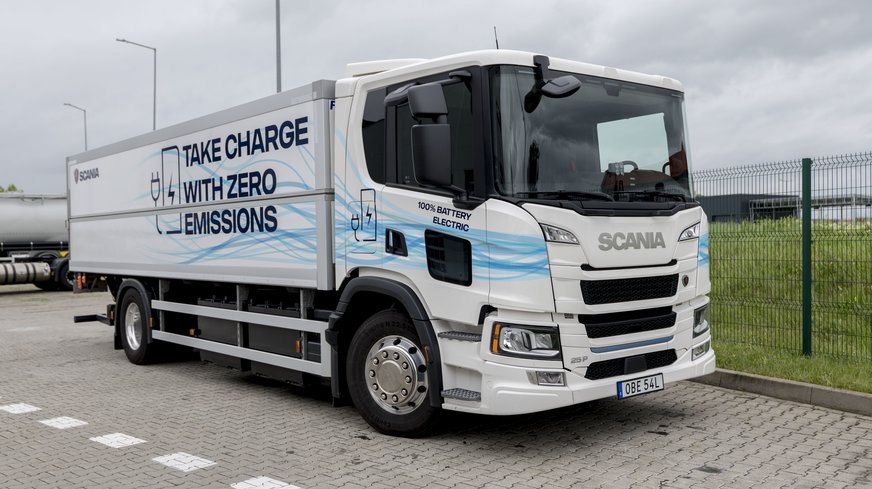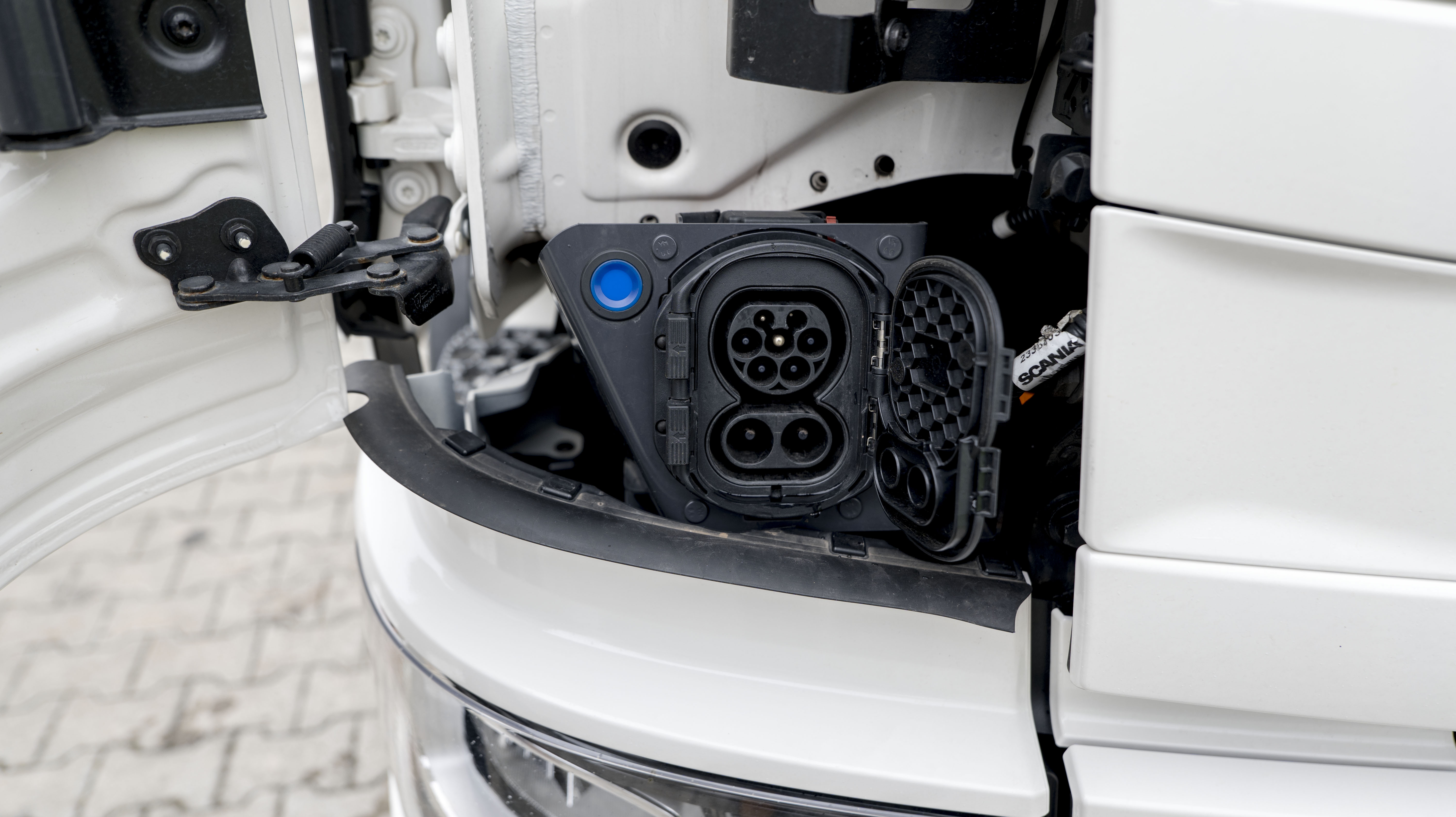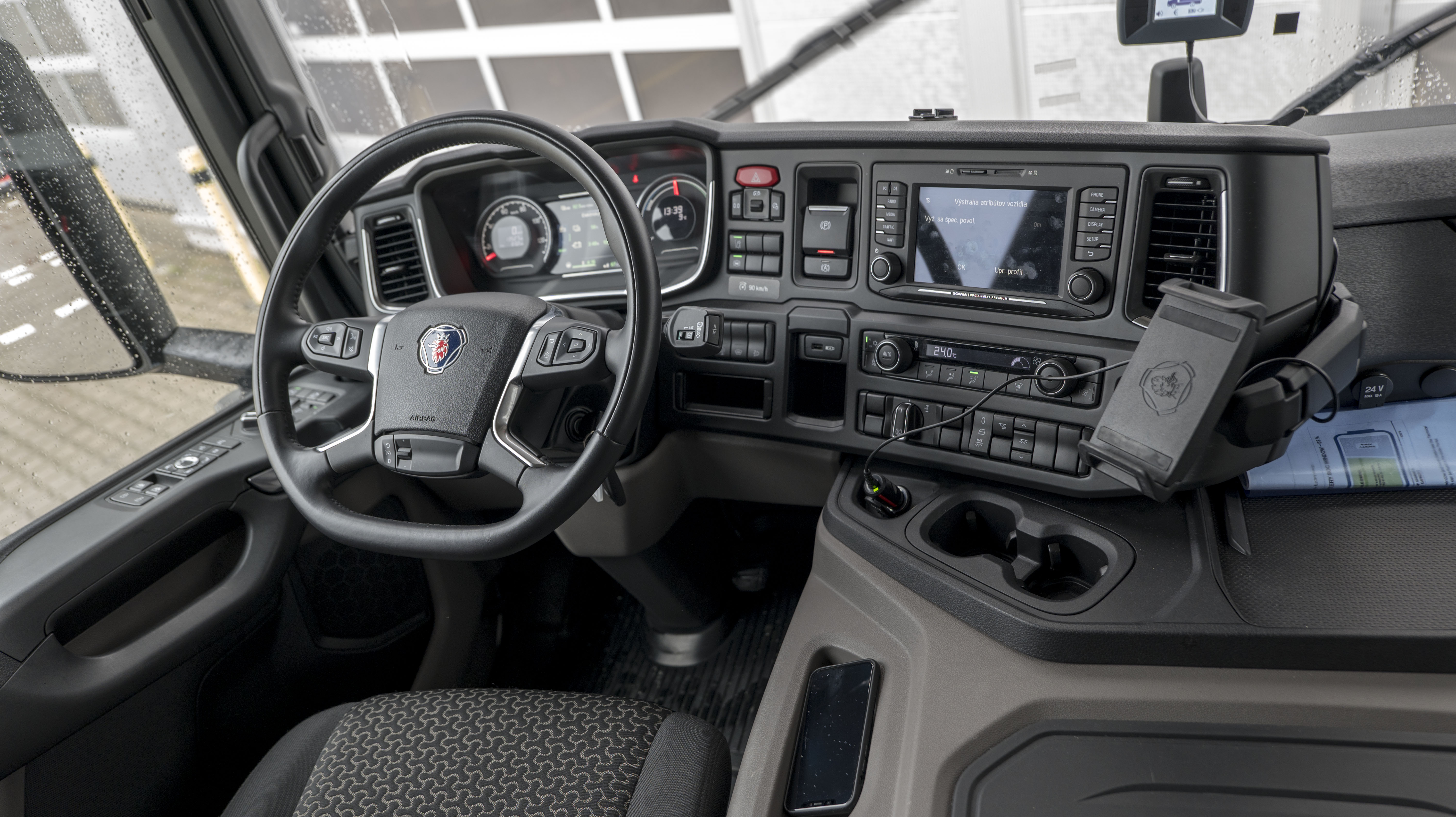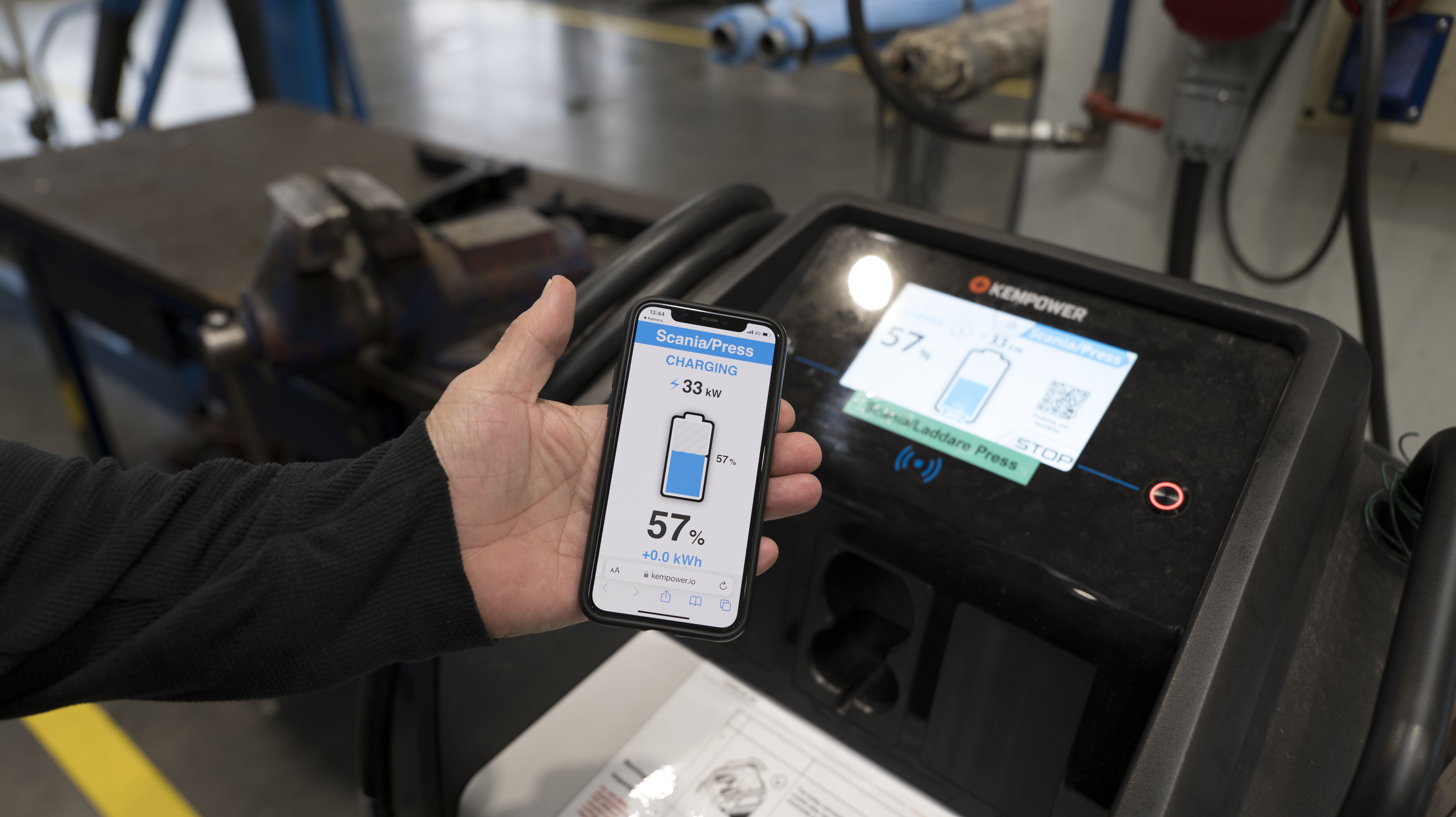SCANIA

Truck model 25 P B4x2NB: how an electric truck drives…
The electric truck market is still in its infancy, and manufacturers are still fine-tuning technologies and standards. However, this does not mean that there are no such cars on the market yet. Practically all traditional manufacturers in this field already offer several models in different categories. Scania introduced its new generation of regional electric vehicles in June 2022. Since then, it has recorded approximately 640 orders and significant customer interest in emission-free solutions. Thus, the parameters of an electric regional truck seem to meet the needs of customers who want to electrify their fleets. The vehicles have batteries with an installed capacity of 624 kWh (usable 468 kWh) and can travel up to 350 kilometers per charge with a total weight of 40 tons. Recharging is possible with a power of up to 375 kW, thanks to which it takes 90 minutes to fully charge. This means a fundamental change for electric vehicles and the possibility of their use in regional operation.
As part of customer tests, the manufacturer also allowed selected journalists to test drive a Scania 25 P BEV electric truck. This model is from a different category than the one already described. It is primarily intended for delivery within large cities and suburbs. The vehicle is powered by one electric motor with a maximum output of 230 kW (nominal output 150 kW) and a torque of 2200 Nm (nominal 1300 Nm). This engine is integrated with a two-speed transmission and is located in the middle of the frame and connected to the axle through a differential by means of a cardan. This allows the drive to be easily adapted to different frame lengths.

The battery can have two capacities, which also depends on the wheelbase. With a wheelbase of 3950 mm, a capacity of 165 kWh is available, which enables a maximum range of 130 km. A wheelbase of 4350 mm is required for a capacity of 300 kWh, but the tested vehicle had a wheelbase of 5350 mm with this capacity. With this battery, the range reaches up to 250 km. This is sufficient for most distribution fleets that operate in urban and suburban areas. The batteries are located on the sides of the frame, where the tanks would normally be, meaning they don’t take up space in the cargo area. For many drivers, the Scania 25 P BEV may be the first electric truck they encounter, so it’s important that it looks like a regular distribution truck with a P-series day cab and box body. Charging is only possible using a DC fast charger with a power of up to 130 kW, while using an 800 V system. The vehicle does not have an AC charger. The Scania 25 P BEV is also equipped with a regenerative braking system that can return energy to the battery when decelerating or braking, which increases the overall range of the vehicle.
And how do you drive such a car? The first thing that catches your eye when you get in is the huge cabin with maximum comfort for the driver and passenger. It is all adapted to maximum comfort at work, you will find a large number of storage areas and folders. The seats have air suspension and are fully air adjustable. The comfort they provide could be envied even by more than one premium personal model.

The driver has a dashboard in front of him with a lot of mechanical controls, which practically surrounds him, so that he can comfortably reach everything. There is also a navigation and multimedia system. There is an excellent view from the cabin. While driving and maneuvering, it is well oriented according to the large panoramic mirrors. The camera will help when reversing, even if its quality is not dazzling. The vehicle is equipped with modern driving assistants such as lane keeping or automatic emergency braking. The tested version had a weight of 16 tons even with a load, so no nimble passenger. Despite this, when starting off, you can feel that the electric motor is pulling. The pull is vigorous, although, of course, not as we know it from passenger cars, but it can’t be. Firstly, moving 16 or more tons while driving with goods is not just like that, and secondly, given that the vehicle is intended for the transport of goods, it would probably not be good if it traveled out during acceleration.
In addition, compared to a passenger vehicle, a truck has a significantly larger range of possible loads, for which all drive components must be dimensioned. The Scania 25 P was in the B4x2NB configuration, i.e. two-axle with rear wheel drive. Both axles have air suspension, so the vehicle is very comfortable to drive. It’s very easy to operate and even though I haven’t driven a truck in a few years, it’s just a matter of sitting down and going. The two-speed automatic transmission is mainly used during the start-up to achieve a smoother start-up with greater pulling power, after a few tens of meters it shifts with a gentle jerk to the second gear, which is used for the entire rest of the ride. When braking, the car first uses recuperation and then the mechanical brakes come on, but you have no chance to recognize the transition between them.

Due to the weight of the vehicle, it goes without saying that, under normal conditions, a slower onset of braking should be expected, as well as when starting off, so that the load does not shift. The ride is very smooth and thanks to the air suspension, you literally ride like on a boat. The main thing you will notice is the almost complete silence in the cabin, which is only disturbed by the murmur of the surrounding air at higher speeds. The only drawback is the length of the vehicle, which you have to take into account when maneuvering in narrow spaces, but that is just a matter of habit. The fact is that drivers of this new generation of electric vehicles have a lot to look forward to. Their workplace, with its comfort and noise comfort, is more like an office than a truck cab. To see that at Scania they know what they are doing. The rest of us can enjoy the fact that we won’t have smelly incinerators driving around in our cities, but electric cars whizzing by ☺.
Specifications of the tested model:
• Battery capacity: 300 kWh (in 9 modules), 4×2 drive, two-speed automatic transmission, electric motor power nominal/maximum: 150 kW/230 kW, torque nominal/maximum: 1300 Nm/2200 Nm, DC charging max. 130 kW (800 V electrical system) CCS2 socket, range 260 km
Mundoquatrorodas

Nenhum comentário:
Postar um comentário